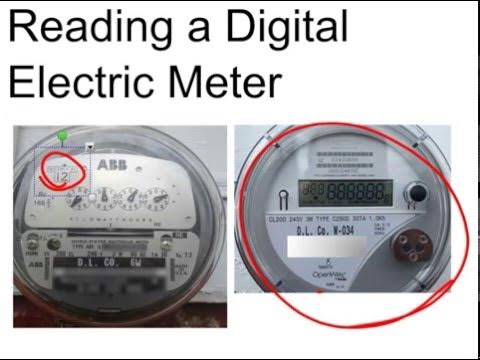The reading of an electrical meter is an essential knowledge every home and rental owner should have. If you know how to keep track of your energy consumption, you will be able to monitor your electricity use, save energy, possibly lower your energy bills, and pinpoint any unusual surges in usage. The following guide will take you through the process of reading an electrical meter and introduce you to the various types of meters you may encounter.
What is an Electrical Meter?
An electrical meter is a device that measures the amount of electrical energy consumed by your home or business. It tracks your electricity usage in kilowatt-hours (kWh), which is the unit used by utility companies to bill customers. The electrical meter is usually located on the exterior of your property, often on a wall or in a meter box.
Types of Electrical Meters
There are a number of electrical meters being used nowadays and different ways in which the reading can be taken. The most commonly used ones are as under:
1. Analog Meters (Dial Meters)
Analog meters are the older style electrical meters that have a dial series. Each dial in the meter reading represents one digit, and you read dials from left to right.
2. Digital Meters
Digital electrical meters are more recent, and they display your usage as a number on an LED or LCD screen. They are easier to read because you just write down the number that appears on the screen.
3. Smart Meters
Smart meters are the latest innovation in electrical meter technology. They automatically record and transmit data to your utility company, giving you real-time updates on your electricity consumption. Although smart meters typically don’t require manual reading, understanding how they work can help you stay informed about your energy usage.
How to Read an Analog Electrical Meter
Analog electrical meters require a little more focus compared to the digital versions. However, once you understand what you are looking for, it is not very hard to read. Here’s how you can read your electrical meter:
Step 1: Understand the Dials
The dials in an analog electrical meter represent five or six digits, each represented on a separate dial. Being numbered clockwise, however, the dials turn opposite to the number, as if half of them turns to the right while others turn left.
Step 2: Record the Numbers
To read the meter, begin with the leftmost dial and read each one from left to right. The number you see is the digit of your meter reading. If the pointer is between two numbers, always record the lower number. If it’s pointing directly at a number, use that number.
Step 3: Account for All Dials
Some dials may appear to be confusing since they turn in the opposite direction. Be sure to familiarize yourself with how each dial moves so you don’t make a mistake when taking your reading. Normally, each dial operates at a different speed based on the electricity flow.
Step 4: Record Your Reading
Once you’ve recorded all the numbers from left to right, you’ll have your electrical meter reading. This number represents the total energy consumption of your home in kilowatt-hours (kWh).
How to Read a Digital Electrical Meter
Reading a digital electrical meter is much simpler than an analog meter. Here’s how to do it:
Step 1: Look for the Display
The digital electrical meter will have an LCD or LED screen displaying your current energy usage. On the screen, there will be a series of numbers, usually followed by “kWh” to indicate the unit of measurement.
Step 2: Record the Displayed Number
Simply record the number shown on the screen. This is your current electrical meter reading. In some cases, digital meters may display additional information such as the date or time of the last reading.
Step 3: No Need to Worry About Dials
Unlike analog electrical meters, there are no dials to interpret on a digital meter. You only need to focus on the number displayed.
How to Read a Smart Electrical Meter?
If your house has a smart meter for electricity, you probably don’t need to read it. The utility company will get the information it needs remotely. However, you should know how it works.
Step 1: Locate the Digital Display
In case it does have a digital display, this is where the smart electricity meter will often display information on your consumption in real time. The data provided can range from current intake to peak use and more.
Step 2: Utilize Online Tools at Your Utility
Many utility companies provide online tools or apps that synchronize with your smart meter to track your consumption of electricity. These tracking tools enable you to access your usage patterns, review your costs, and accordingly make adjustments to save even more energy.
Step 3: Monitor Your Consumption
With a smart meter, you can track your electricity consumption continuously, allowing you to make immediate changes to reduce your energy usage if you notice any spikes.
Why It’s Important to Know How to Read Your Electrical Meter?
Knowing how to read your electrical meter will keep you up to date with your consumption. Whether it is analog, digital, or a smart meter, checking the usage gives you an insight into your electricity bills. Regular monitoring can also help you detect problems such as faulty equipment or discrepancies in billing.
Conclusion
Such may not seem to be a complex task; reading an electric meter will reveal a significant amount of information about one’s energy consumption. For analog, digital, and smart meters, understanding those numbers helps in keeping check on consumption, and savings on the bills are potentially possible. You should constantly check your electrical meter readings and know more about how you use your energy

